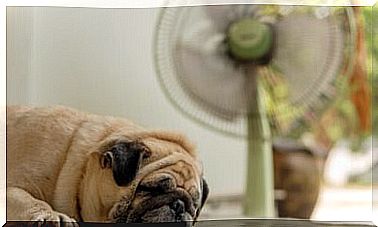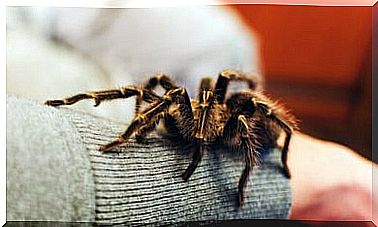The Fly As A Vector Of Diseases
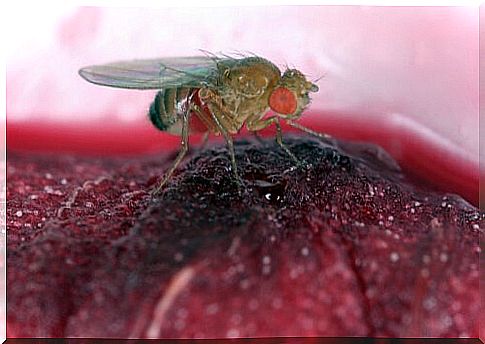
Flies are vectors of disease. That is, in their bodies they carry bacteria, germs and fungi to other surfaces, human bodies, animals or food. Especially through your legs. When the fly flies, it makes stops serving as a vehicle for pathogens, transmitting disease.
Flies are very attracted to decaying organic matter because it is the medium where they lay their eggs to reproduce.
Through studies of their microbiome, it has been calculated that these opportunistic insects carry an average of 800 bacteria. Most are harmless to people, but about 100 of them have been shown to cause pathologies of different intensity and severity.
Next, we will know a little more about the fly as a vector of diseases and we will analyze these pathologies to identify them. In addition, we’ll look at some tips for controlling your presence in homes and other spaces inhabited by people.
What diseases can the fly spread
The common fly usually lands on any surface that is dirty or has microorganisms to which it is attracted, especially carrion, an ideal means for laying eggs and for worms to hatch. She is also very attracted to feces and garbage.
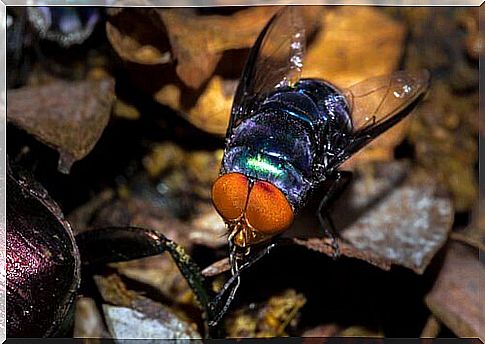
Once the skin of this insect is impregnated, it can transfer them to human skin, food, personal utensils or furniture, where it deposits these microorganisms. That’s when the person comes in contact with them or ingests them. By doing this, you run the risk of acquiring one or more diseases for which this insect is a vector:
- Children’s diarrhea. In countries with a depressed economy, the greatest damage to health caused by flies is experienced by younger children. They suffer from persistent, watery diarrhea that compromises their children’s lives, causing rapid dehydration. This diarrhea is also highly contagious.
- Cholera. It causes diarrhea and vomiting, which in turn degenerates into dehydration and fatigue.
- Typhoid fever : produces headaches and abdominal pain, high fever, loss of appetite, constipation or diarrhea, and fatigue.
- Dysentery. The most notable symptoms are diarrhea with mucus and blood, vomiting, abdominal pain, very high fever, headache and myalgia.
- Salmonella, gastroenteritis. Those affected suffer from abdominal pain, bloody diarrhea, vomiting, headache, fever and muscle pain.
- Myiasis. It is an infection of the skin, eyes, ears or other tracts. It can degenerate into ulcers, production of pus, proliferation of larvae and formation of boils.
Once you identify these symptoms, you should go to the doctor without delay. The fly as a vector of disease can pose many health risks.
These are not the only pathologies that the fly is capable of transmitting as a vector of diseases, but they are the most common. Prevention is always essential.
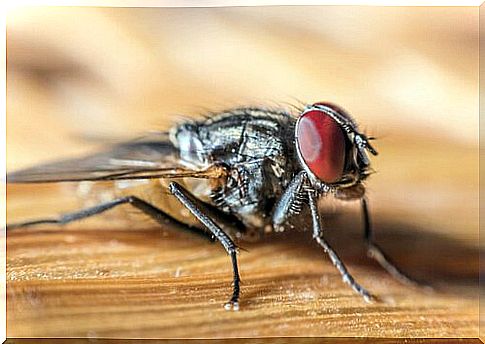
How to control flies at home
The following recommendations stop the proliferation of these insects or eradicate them, to avoid the diseases of which they are vehicles:
- Space cleaning. Flies are attracted to dirty, smelly places and avoid well-sanitized spaces.
- Keep trash covered/closed. Also, you have to get rid of it daily, especially if it contains organic waste.
- Use mosquito nets on doors and windows to keep out insects.
- Garbage control around homes and inhabited spaces. When the public collection service is deficient, relevant complaints must be made, as they are considered a public health problem.
- Keep food covered, do not expose it to the environment for a long time and refrigerate it as long as possible. Remember, the fly uses its saliva to dissolve solid food and feed on it.
- Ultraviolet or fumigation equipment. These options work, but have a higher economic cost.
Other Home Tricks and Tips
Tricks to control flies abound on the Internet, but not all of them are effective. As examples we can cite: hanging water bags, placing aromatic plants that give off smells that displease flies, spraying vinegar, adding garlic, traps made with sweets… These are the most recommended, try to choose what works best for you.
The recommended hygiene measures are sufficient to keep flies away from homes, offices and other spaces where human activities take place.
The fly as a vector of diseases can certainly become a public health problem, but they cannot be completely eliminated. They are part of the ecological chain and play a role in nature.

